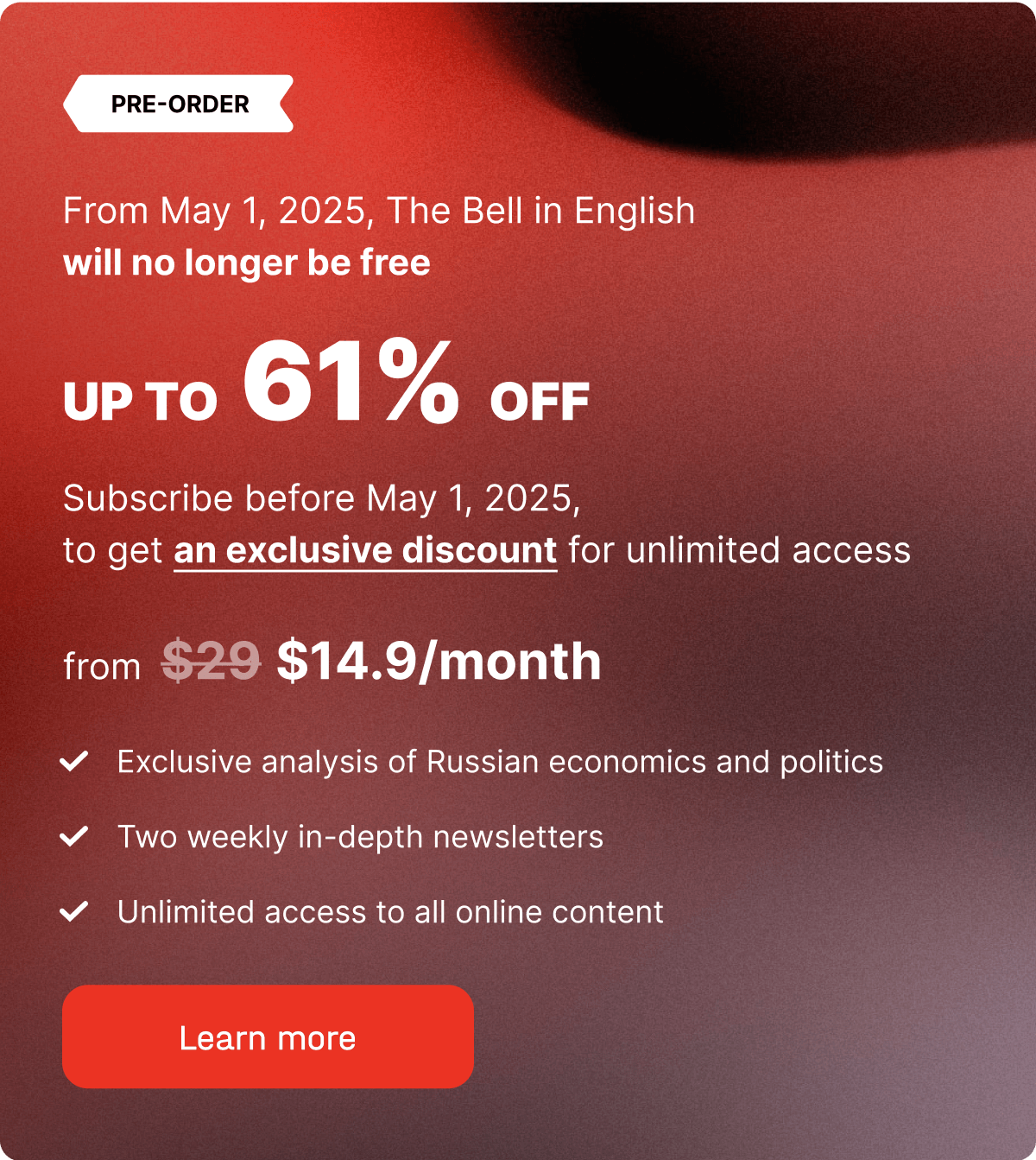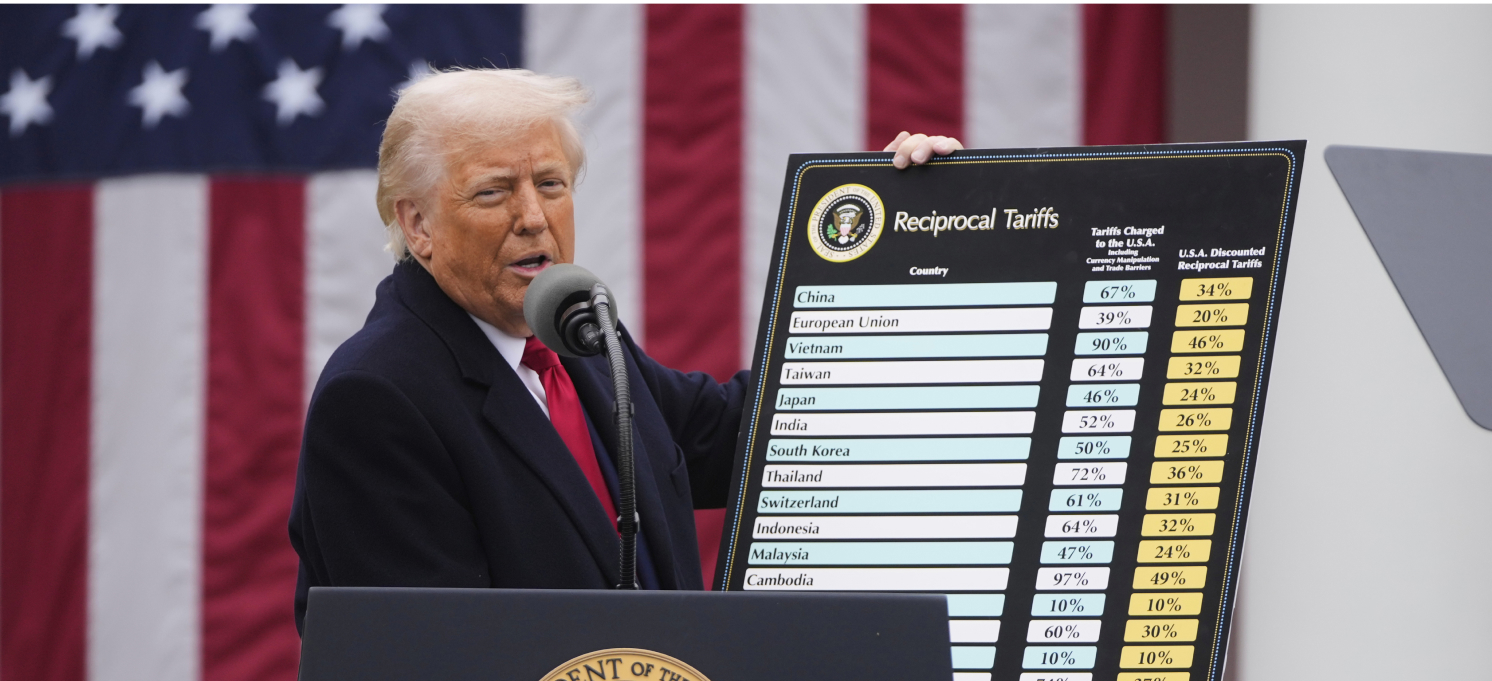
Preparing for new ‘confiscation wars’
Hello! Welcome to your weekly guide to the Russian economy — written by Alexander Kolyandr and Alexandra Prokopenko and brought to you by The Bell. Our top story this time is the discussions underway in Russia about a legal tool to allow the state to seize the frozen assets of foreign investors. We also look at why the Central Bank hiked interest rates two percentage points to 18%.
The Kremlin wants to make it easier to seize Western assets
Russia is currently discussing a legal mechanism to seize funds from frozen accounts belonging to foreigners. Officials calculate that even the existence of such a mechanism should reduce the possibility of Russian assets being confiscated in the West. In a worst case scenario, it will allow Russia to fight a new battle of the “confiscation war” in which Russia and the West seek to inflict tit-for-tat economic harm on one another.
- A source told Interfax about the government’s plans earlier this month. And two sources confirmed to The Bell that the authorities are, indeed, drawing up a document that permits the seizure of foreign-owned funds in frozen accounts. It would be used in response to any attempt to seize Central Bank assets abroad.
- The accounts officials have in mind are so-called Type C accounts. These are escrow accounts that appeared in 2022 on the orders of Russian President Vladimir Putinin in response to the blocking of Russian assets abroad at the start of the full-scale invasion of Ukraine. Back then, assets of Russian investors held in accounts at Russia’s National Settlement Depository (NSD) in Europe, and Central Bank assets in Western countries, were frozen. In response, Russia stopped foreign investors from withdrawing funds with the introduction of these Type C accounts.
- These accounts are credited with interest and dividends paid out by Russian securities. But this money cannot be transferred out of Russia without the express permission of a government commission. In the meantime, it can only be used to purchase Russian government bonds, or pay taxes.
- Type C accounts are an important part of the system of capital controls created in 2022 in response to Western sanctions and the seizure of Central Bank assets. Put simply, it was foreign investors who paid the price for the freezing of Russian assets. The Kremlin clearly hopes – at some point – to be able to exchange the funds held in Type C accounts for frozen Russian assets in the West.
- Last year, Vladimir Chistyukhin, deputy chairman of Russia’s Central Bank, referred to Type C accounts as an “exchange fund,” and called for Russia to accumulate more of them. The term “exchange fund” is normally applied to prisoners or detained spies, who can be traded for Russians held in Western jails.
- Amid discussions in the West about the possible seizure of frozen Russian assets, Putin signed decree № 442 in May. This established a special compensation process for losses sustained by Russia, or the Russian Central Bank, as a result of U.S. actions. The decree enables Russian courts to mandate compensation via U.S.-owned securities in Russia, property rights and shares in Russian companies.
- However, the document currently under discussion will simplify the process of seizing foreign-held assets. Likely, the process would resemble assets forfeiture. Claims will be filed by the Central Bank, or the Federal Property, and the government’s Commission on Monitoring Foreign Investments would be tasked with determining the assets for an immediate seizure.
- In total, there are about 1 trillion rubles ($12 billion) frozen in Type C accounts. This is far less than the equivalent amount of Russian funds frozen in the west (about $300 billion), but twice as much as the Russian money frozen in the U.S. ($5 billion).
- Washington is the most prominent advocate of seizing Russian assets and transferring them to Ukraine, insisting that such a course of action would be legal. But, so far, Europe has refused to do this. Instead, the U.S. has organized its own scheme: Russian assets are not confiscated, but interest earned from them is transferred to Ukraine via debt. Russia, unsurprisingly, claims this is illegal. However, it is unclear whether the Kremlin regards it as de facto confiscation.
Why the world should care
Even if the mechanism currently under discussion is never used, officials hope its existence might reduce the likelihood of Russian assets being seized in the West (perhaps by encouraging Western companies with assets stuck in Russia to lobby against any such confiscations). If it is used, however, it would be an escalatory step. It would not so much damage Russia’s investment image (which can’t get much worse) as reduce the chances of Russian owners of frozen assets in the West ever getting their money back.
Russia hikes interest rates to 18% to combat high inflation
As expected, the Central Bank on Friday increased its base rate by 2 percentage points to 18%. The Bank’s hawkish rhetoric suggests this hike might not be the last of 2024.
- The main reason given by the Central Bank for its decision was accelerating inflation, which remains stubbornly high. The Central Bank officially raised its forecast for annual inflation in 2024 to 6.5-7% from 4.3%-4.8%.
- Judging by the Central Bank’s press release, more rate hikes are very much on the cards. “To ensure that inflation starts to fall again it requires further tightening of monetary policy, and to bring inflation back to target levels requires stricter monetary conditions than previously assumed,” said the release. “The Bank of Russia will evaluate the feasibility of further increasing its base rate at the next board meeting.”
- From the Central Bank’s forecasts, it follows that Russian interest rates will likely remain in the double digits until at least 2026. The average rate until the end of 2024 is expected to be between 18% and 19.4% (which means that the Central Bank is considering raising rates to 20% before the year’s end).
- At a press conference following the rate hike, Central Bank head Elvira Nabiullina said that Russia is experiencing the greatest overheating of its economy for 16 years. According to her, the last time anything like this was experienced was on the eve of the 2008 economic crisis. At the same time, the Central Bank said it sees no danger of financial instability. Nabiullina expects monthly inflation to start falling in July.
- The Central Bank also revised its economic forecasts downward: it now anticipates GDP growth to be between 3.5% and 4% this year.
Why the world should care
The key drivers of inflation in Russia – increased spending; a rigid labor market (which leads to inflated wages and greater consumer demand) and geopolitical uncertainty – all continue unchecked. The Bank warned that interest rates are likely to go higher still.
Figures of the week
Some Chinese banks are dividing their yuan into “clean” yuan, which are used for everyday business, and “dirty” yuan that are involved in Russia-linked transactions, Vedomosti reported Friday, citing business people and lawyers who work with China. This suggests switching to yuan has not been the panacea for Western sanctions many Russian officials thought it would be. Some Chinese banks appear to be refusing any money from Russian banks, or which has documents linking it to Russia, according to the newspaper. There have been incidents in which Chinese banks refused to accept yuan purchased on the Moscow Exchange, which is under Western sanctions, Vedomosti reported.
The average time it took to make a payment from a Russian bank to a bank in the Central Asian countries of Kazakhstan, Kyrgyzstan, Uzbekistan and Tajikistan increased to two weeks this month. That’s up 15% compared with June. Payment refusals involving banks in these countries in July reached 30%. The difficulties apply to transactions in both rubles, and local currencies. All this stems from tighter compliance rules in Central Asia nations, which now require more documentation and explanation from Russian clients.
Weekly inflation was 0.11% between July 16 and July 22, the same as the previous week, according to the Economic Development Ministry. Annual inflation eased to 9.18% from 9.21% the previous week.
Further reading
Russia’s surprising consumer spending boom
Price Index Based on Online Receipt Data
Kremlin Looks to Moscow in Switch to Universal Electronic Voting



PAID SUBSCRIPTION LAUNCH
From May 1, 2025, The Bell in English will no longer be free
From May 1, 2025, all The Bell’s newsletters and online content will be behind a paywall. We have taken this decision so that The Bell can remain financially independent, and maintain our high standards of journalism and economic expertise






